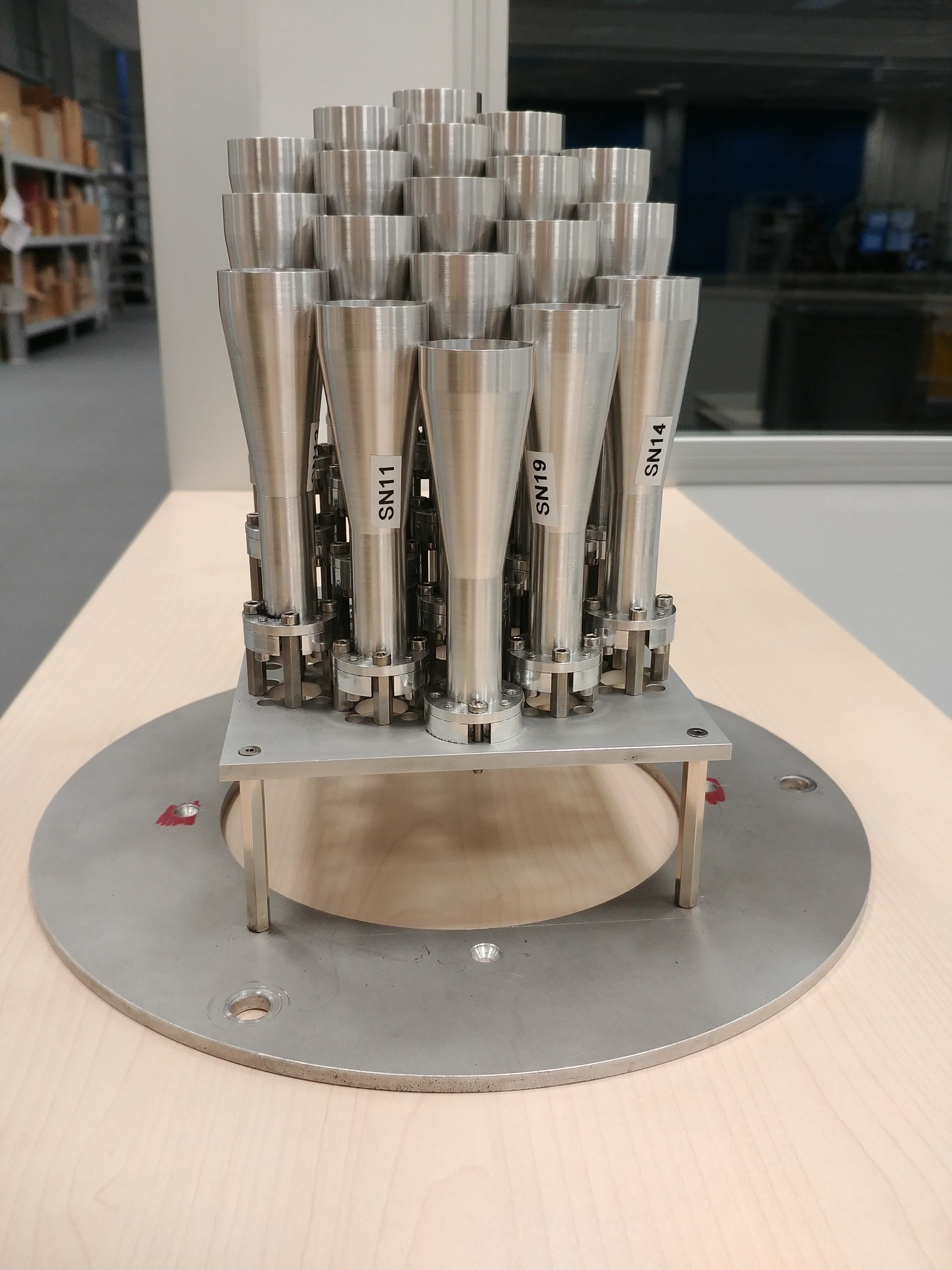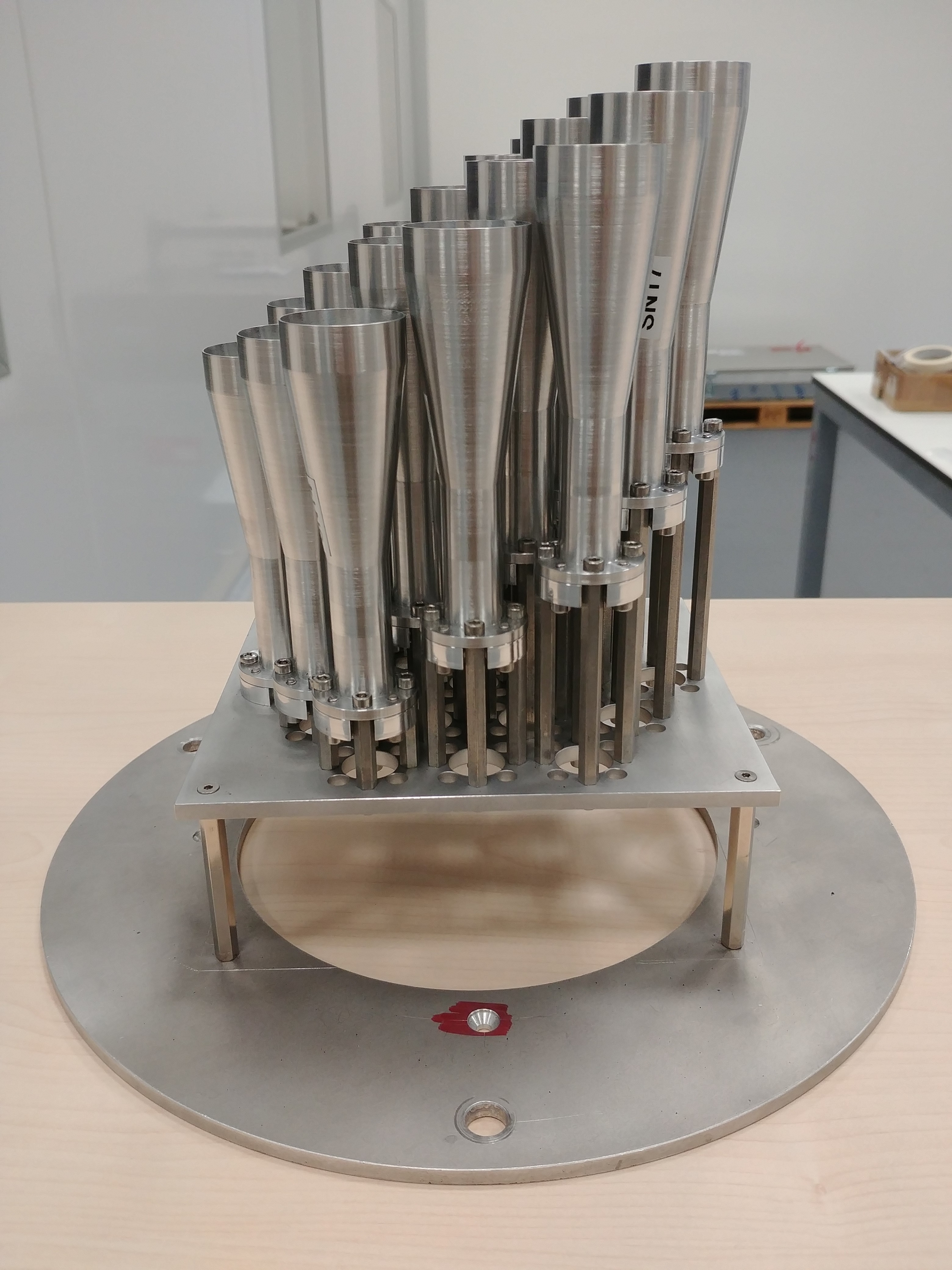
-
StatusOngoing
-
Status date2018-01-12
The main objective of this activity is to demonstrate the performance of an Imaging Antenna system combining aperiodic feeding arrays with one or more reflectors, in transmit and receive modes, for the generation of a multiple beam coverage with only one antenna for geostationary broadband satellite communication systems in Ka-band. Moreover the design, manufacturing and RF test of antenna critical breadboard elements is also requested.
During the project several challenges have been faced and solved adopting state of the art solutions like:
- design, manufacturing and testing of an innovative Imaging antenna demonstrator;
- assessment by CIRA of an innovative Additive Layer Manufacturing process, i.e. the Electron Beam Melting (EBM) process, for the manufacturing of the critical breadboard.
With the Imaging antenna system the idea is to combine small aperiodic active phased arrays with a large main reflector and a small sub reflector, which are positioned such to project a large image of the small feeding arrays on the main reflector aperture.
The proposed front-end architecture for single TX/RX imaging antenna configurations consists of two different active phased arrays (one TX and one RX), placed side by side in the asymmetry plane of the Imaging antenna optics, feeding the imaging antenna sub-reflector.
This innovative approach allows to consider a single optics system, the imaging antenna, with two phased arrays of small dimensions and reduced number of radiating elements. This solution presents several benefits with respect to DRA antennas in terms of feasibility, complexity and accommodation issues, while maintaining all the desired system characteristics in terms of coverage reconfigurability and power flexibility which characterize DRA antennas.
Among the identified Imaging antenna architectures potentially suitable to support TX/RX satellite multibeam applications in Ka-band, the Imaging Antenna with Conformal Array and Axes Tilt has been selected at the end of the specific trade-off activity as antenna baseline configuration and designed more in detail for both the operative mission scenarios, i.e. Continental and National.
The Confocal imaging system antenna architecture with Conformal Feed Array is an imaging setup derived from the classic Confocal architecture by optimizing the position and the shape of the non-planar feed array. It is based on an ESA patent design approach.
The optimization process relies on a GO-based caustic region analysis and feed element positions are chosen such to have a planar caustic region surface on the main reflector plane after dual reflection of rays.
The advantage of this configuration is that the produced spot beams guarantee an improved stability in terms of HPBWs, while keeping unchanged the reflector’s geometry and not adding up complexity to the system.
As the major drawback of the selected imaging antenna configuration is the inter-element blockage of feed elements within the conformal feeding array, this aspect has been addresses in detail with the manufacturing and testing of the Critical Breadboard.
The selected Critical Breadboard for the present project consists of 19 identical horns working in Tx Ka band assembled in three different array configurations, one planar and two conformal (on parabolic surfaces).
The RF test campaign (S-parameters and radiated) carried out by Space Engineering on the Imaging Critical Breadboard antennas showed good performances in terms of both Return Loss and Co and Cross-polar radiation patterns, with very good agreement with predicted performances.


The system architecture implemented in the overall detailed antenna design is shown in the figure below for the Tx antenna. Similar architecture for the RX antenna, with LNAs instead of HPAs:

The system architecture foresees several BFNs, each one corresponding to the generated reconfigurable beam. The BFNs are connected to the radiating elements by combiners.
Since the multi-beams BFN is placed before the power amplifier section, all the BFNs exhibits low power characteristics.
The program has been divided in two phases:
- Phase 1 dedicated to the selection of the mission scenario, the consolidation of the requirements and the detailed design of the imaging antenna configuration associated with sparse/aperiodic feeding arrays;
- Phase 2 dedicated to the design, manufacturing and testing of the imaging Critical Breadboard.
All the activities foreseen for the Phase 1 and Phase 2 of the contract have been carried out.
The RF measurement results achieved with the ISAA Critical B/B are really very good as compared with the simulations. The effectiveness of the selected imaging Confocal Ka-band TX/RX antenna solution, associated with sparse/aperiodic array feeding system, seems to be demonstrated for reconfigurable national/continental coverage missions.




